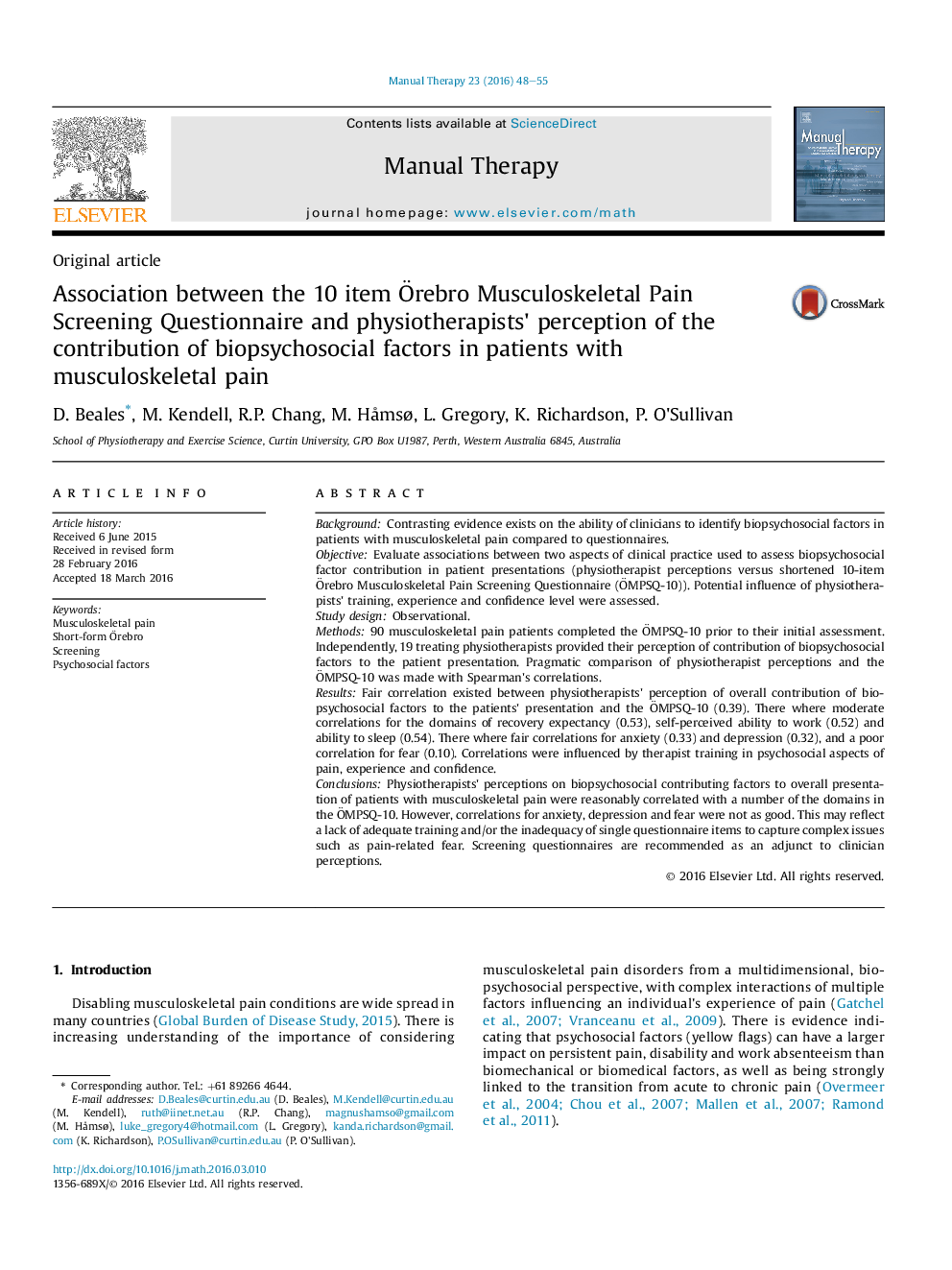| کد مقاله | کد نشریه | سال انتشار | مقاله انگلیسی | نسخه تمام متن |
|---|---|---|---|---|
| 2625138 | 1563095 | 2016 | 8 صفحه PDF | دانلود رایگان |
• Association between clinician perception of contributing factors and the ÖMPSQ-10 were mixed.
• Associations for anxiety, depression and fear were not as good as some other domains.
• Higher levels of therapist confidence and experience improved some associations.
• Training in psychosocial aspects of pain improved some associations.
• Use of screening tools as an adjunct to clinician perception is recommended.
BackgroundContrasting evidence exists on the ability of clinicians to identify biopsychosocial factors in patients with musculoskeletal pain compared to questionnaires.ObjectiveEvaluate associations between two aspects of clinical practice used to assess biopsychosocial factor contribution in patient presentations (physiotherapist perceptions versus shortened 10-item Örebro Musculoskeletal Pain Screening Questionnaire (ÖMPSQ-10)). Potential influence of physiotherapists' training, experience and confidence level were assessed.Study designObservational.Methods90 musculoskeletal pain patients completed the ÖMPSQ-10 prior to their initial assessment. Independently, 19 treating physiotherapists provided their perception of contribution of biopsychosocial factors to the patient presentation. Pragmatic comparison of physiotherapist perceptions and the ÖMPSQ-10 was made with Spearman's correlations.ResultsFair correlation existed between physiotherapists' perception of overall contribution of biopsychosocial factors to the patients' presentation and the ÖMPSQ-10 (0.39). There where moderate correlations for the domains of recovery expectancy (0.53), self-perceived ability to work (0.52) and ability to sleep (0.54). There where fair correlations for anxiety (0.33) and depression (0.32), and a poor correlation for fear (0.10). Correlations were influenced by therapist training in psychosocial aspects of pain, experience and confidence.ConclusionsPhysiotherapists' perceptions on biopsychosocial contributing factors to overall presentation of patients with musculoskeletal pain were reasonably correlated with a number of the domains in the ÖMPSQ-10. However, correlations for anxiety, depression and fear were not as good. This may reflect a lack of adequate training and/or the inadequacy of single questionnaire items to capture complex issues such as pain-related fear. Screening questionnaires are recommended as an adjunct to clinician perceptions.
Journal: Manual Therapy - Volume 23, June 2016, Pages 48–55
